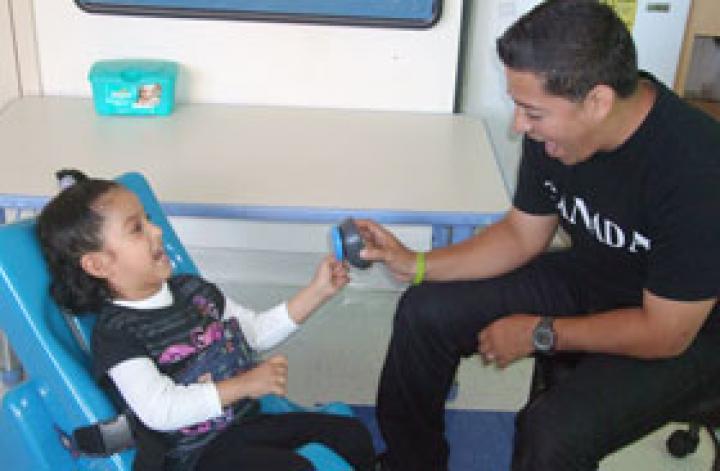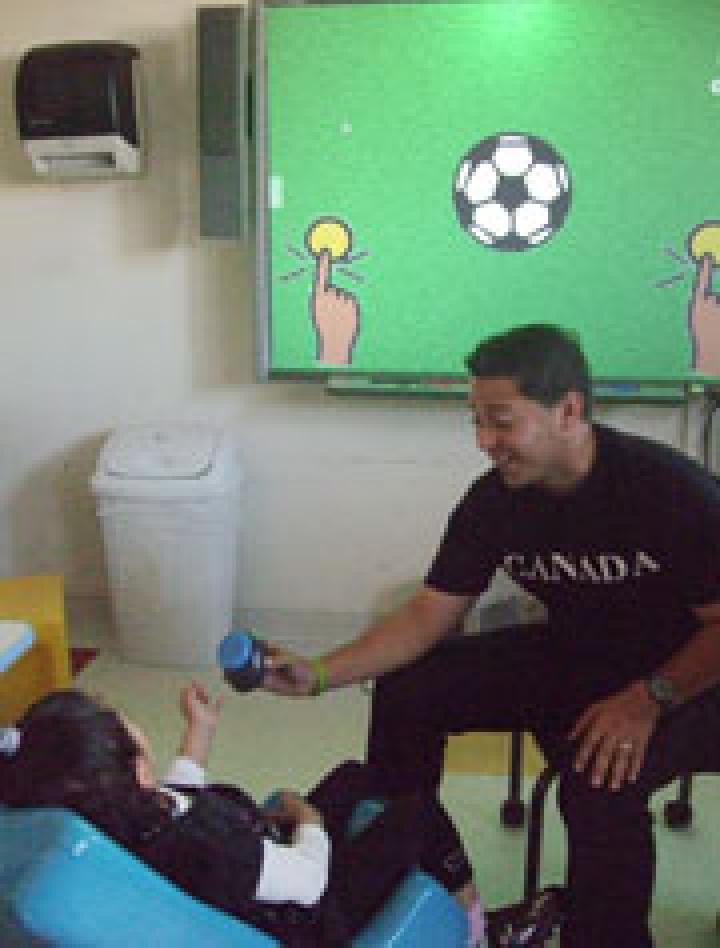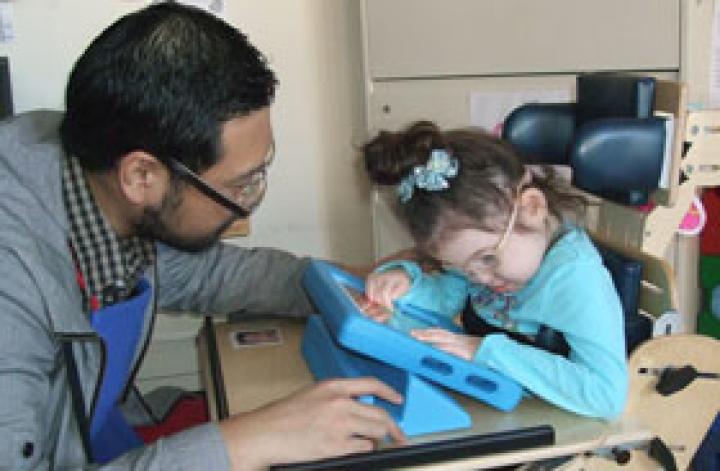Share
Three-year-old Rawdah loves soccer. Rawdah, along with many students at the NYL Roosevelt Children's Center designed for preschoolers with multiple disabilities, may not look like a soccer player in her wheelchair, but thanks to the use of technology, she is!

Watching the large animated SMARTBoard, a touch-screen computer which acts like an oversized iPad mounted on the wall, Rawdah sees the field and the soccer ball. She presses a large blue button and to her delight, she scores a goal!
Gretta, who has a neuromuscular disorder, wears braces, uses a power wheelchair and depends on a ventilator. Her power wheelchair provides her with independence in the school setting. She also is verbal but has limited use of her hands. Using an iPad, she can do puzzles and participate in other classroom activities.
"We're giving children access to the environment," says Karen Tumulty, Roosevelt's Curriculum Coordinator. "We're empowering them to be social and have choice."
Kas, a 3-year-old with Cerebral Palsy who is non-verbal, uses an iPad to communicate with teachers and to express all of his needs. He points to photos and words on the screen to let others know, for example, that he's hungry or wants to take a walk.

The future for children and adults with special needs may be right in your pocket, on your desk or in your briefcase. Its potential use, however, may be hidden, at least for now.
The YAI 25, however, could change all that. Just as you look for the nearest restaurant on your smartphone, why couldn’t a well-researched list rate the best technologies, apps and other digitally-based curricula serve as an authoritative, "go to list" for parents of young or adult children with autism, communication delays or trouble with fine motor skills?
"We are only beginning to see the impact of the iPhone or iPad as a way to break through barriers once considered insurmountable," said Yusuke Namiki, a teacher at the school.
Technology already is playing a variety of roles for individuals in programs throughout YAI. The next step is to pool that knowledge from YAI staff, people with disabilities, families and other constituents, and create a web-based forum of reviews and discussions on new and innovative uses for common apps and technologies.

"A lot of our students can't go outside for recess, but we can watch the weather on a SMARTBoard or go to Google Earth," said Yusuke. "With technology, we bring as much of the world outside to them."
For Yusuke, who holds a bachelor's degree in early childhood/special education and a master's in technology and communications, the benefits of technology for his students comes to life every day. "A lot of the apps created for the iPad are sold as toys and games," he says. "We're finding a way to use them for educational purposes."
